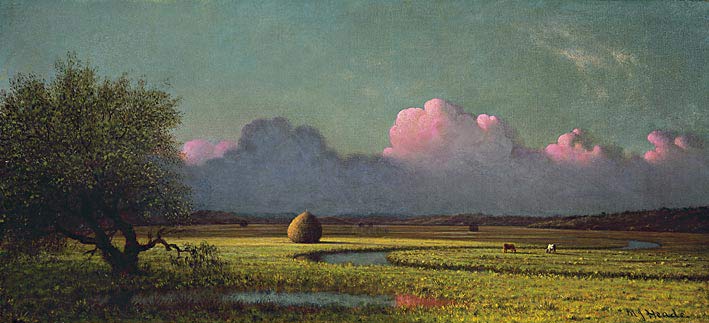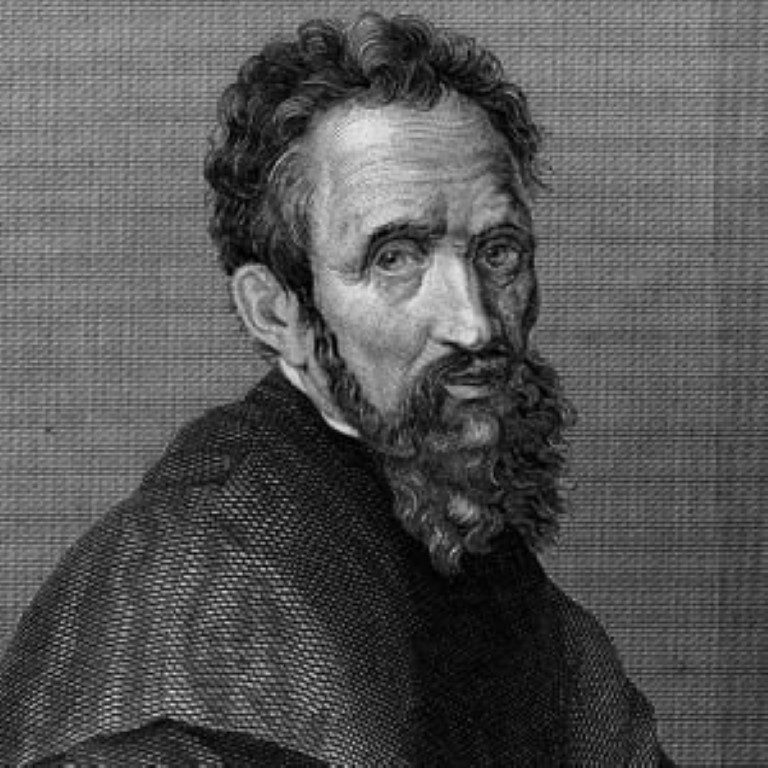August 11, 2025
Martin Johnson Heade (August 11, 1819 – September 4, 1904) was an American painter whose extraordinary career spanned nearly seven decades, establishing him as one of the most distinctive voices in 19th-century American art. Known for his luminous salt marsh landscapes, tropical hummingbird paintings, and sumptuous floral still lifes, Heade captured the subtle interplay of light and atmosphere with an almost scientific precision that set him apart from his contemporaries.
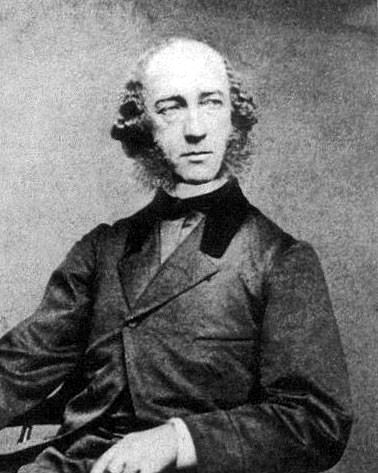
Born in the small hamlet of Lumberville, Pennsylvania, Heade was the son of a storekeeper. His first artistic instruction came from the renowned folk artist Edward Hicks, who lived in nearby Newtown, and possibly from Edward’s cousin, the portrait painter Thomas Hicks.
Heade was painting by 1839, with his earliest known work being a portrait from that year. He traveled to Europe in his early career, living in Rome for two years to further his artistic education. He first exhibited his work in 1841 at the Pennsylvania Academy of the Fine Arts in Philadelphia, and again in 1843 at the National Academy of Design in New York.
The pivotal moment in Heade’s artistic development came in 1859 when he encountered Frederic Church’s monumental painting “Heart of the Andes,” which was displayed in its own gallery in New York City. This experience ignited Heade’s fascination with tropical landscapes and led to his most ambitious project: documenting the hummingbirds of Brazil.
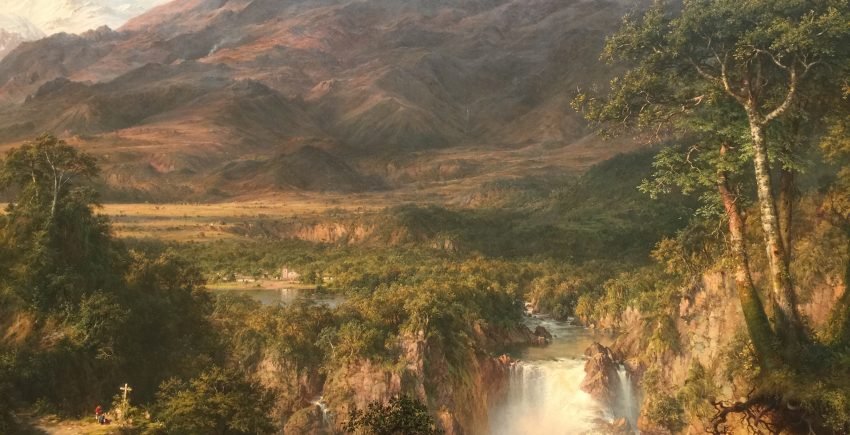
In 1863, Heade traveled to Brazil with the grand plan to create “The Gems of Brazil,” an elegant album of hummingbird illustrations “got up in the highest style of art”. Arriving in Brazil in late 1863, Heade won the admiration and support of Dom Pedro II, the Emperor of Brazil. In 1864, he twice exhibited a dozen of his hummingbird paintings in Rio de Janeiro under the series title “The Gems of Brazil”. The artist’s work so impressed the Emperor Dom Pedro II that he awarded Heade with the Order of the Rose, the country’s most important order of chivalry at the time.
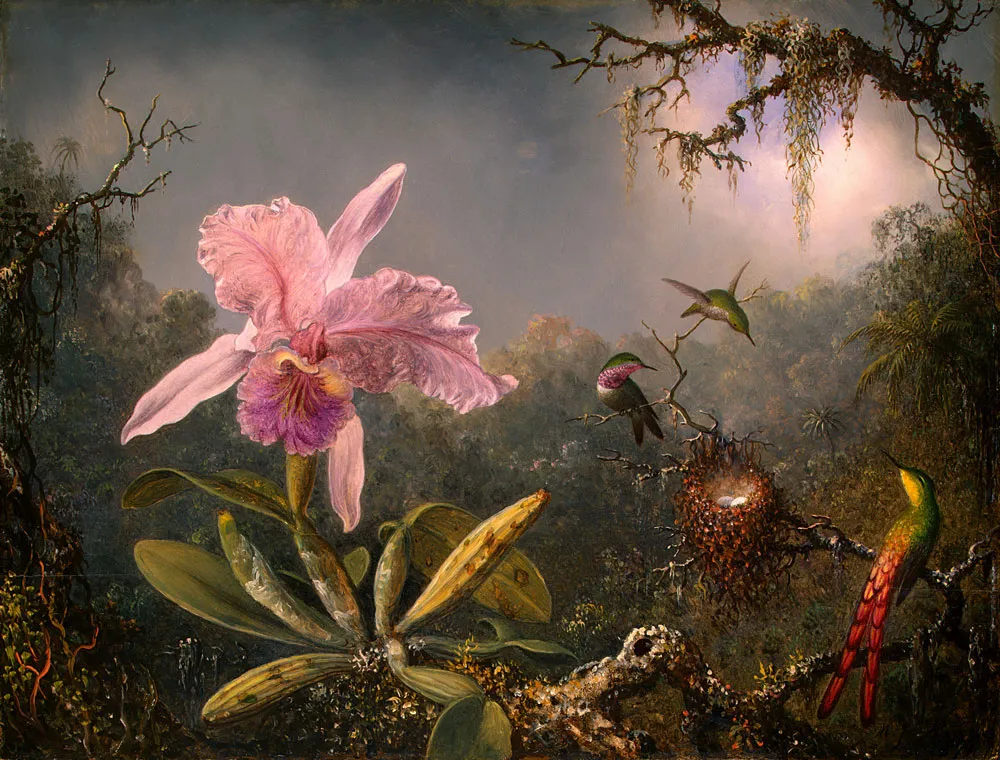
Around 1857, Heade became interested in landscape painting, partly through meeting established artists John Frederick Kensett and Benjamin Champney in the White Mountains of New Hampshire. He moved to New York City and took a studio in the Tenth Street Studio Building, which housed many famous Hudson River School artists including Albert Bierstadt, Sanford Gifford, and Frederic Edwin Church. His friendship with Church proved particularly influential, inspiring both his tropical expeditions and his approach to atmospheric effects.
Heade’s paintings were informed by a worldview recently revolutionized by Charles Darwin; his hummingbird and flower compositions reflected Darwin’s theories about pollination and adaptation. The majority of his hummingbird compositions date between 1875 and 1885, after his final trip to South America, when he had fully mastered the integration of scientific observation with artistic vision.
In 1883, Heade finally settled in St. Augustine, Florida, where he married for the first time and lived the rest of his life. He continued to paint and found a patron in oil tycoon Henry M. Flagler. His Florida period produced some of his most celebrated works: sumptuous magnolia paintings posed on folds of colored cloth as if they were Titian nudes. His 1890 “Giant Magnolias on a Blue Velvet Cloth” was later honored with a U.S. Postal Service stamp in 2004.
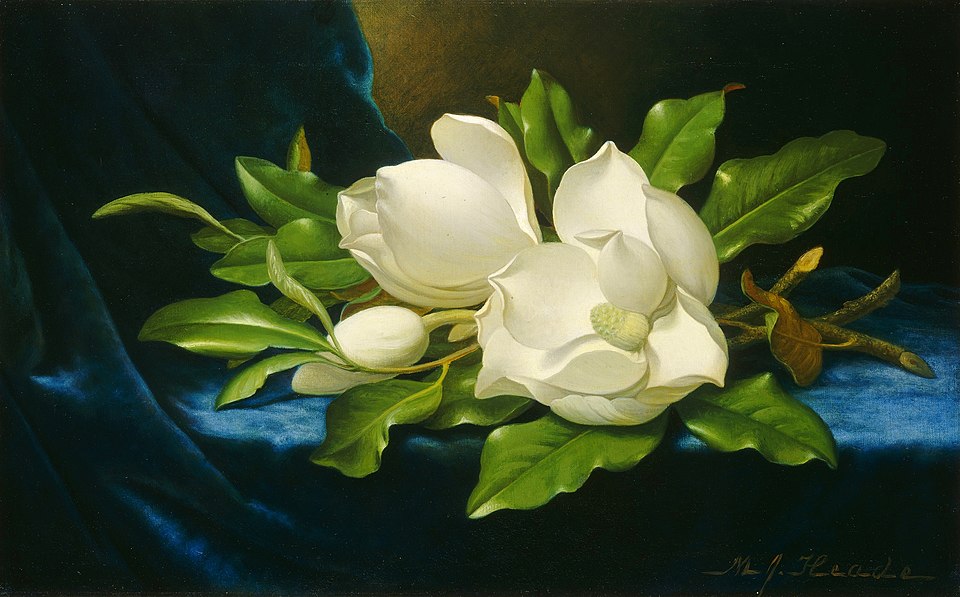
Heade was not a widely known artist during his lifetime, but his work attracted the notice of scholars, art historians, and collectors during the 1940s. After his death in 1904, his work was forgotten until the 1940s, when renewed interest in American painting unearthed his large body of work, inspiring numerous exhibitions and increasingly high auction prices. Many people who acquired Heade paintings in the 1930s for less than a hundred dollars have been pleasantly surprised by his rise in popularity, with works now fetching hundreds of thousands of dollars at auction.
Cover image: Sunlight and Shadow: The Newbury Marshes
Contributor

